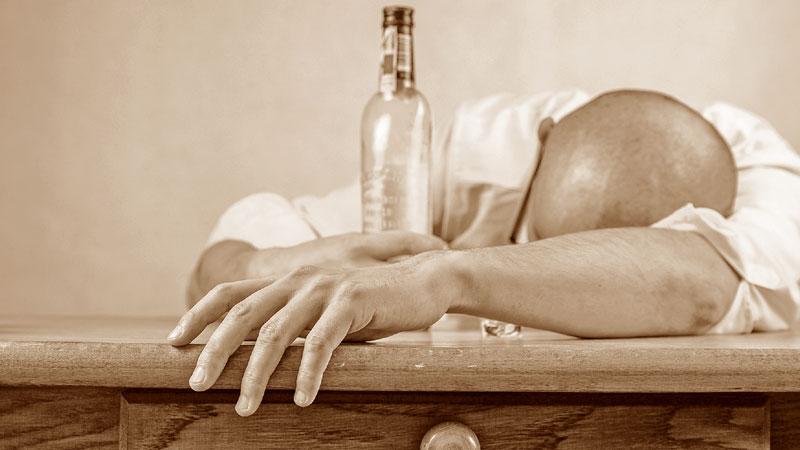
Pramod De Silva, in his column last week, made an explicit analysis of direct and indirect ill-effects of alcohol and tobacco consumption and presented a good case to say ‘no’ to alcohol. This writer intends to move forward with this critical issue, confining himself to the scourge of alcohol dependence in Sri Lanka and briefly discuss the recommended solutions.
First, let us go through some basic statistics.
According to the Excise Department, hard liquor production in Sri Lanka rose in 2016 by 7.1 per cent over the previous year. The official figures for 2017 are not yet available. However, between 2015 and 2017, almost 50 million bulk litres of ethanol were imported for the domestic liquor industry. By contrast, the quantity of ethanol legally imported in 2013 and 2014 was 23.9 million bulk litres. These numbers point to a significant expansion in local alcohol production.
Analysis
The report issued by the World Health Organisation, titled, – World Health Statistics 2017, indicates that the per capita consumption of liquor in Sri Lanka is 4.1 litres per person. In Europe, it averages to 0.5 litres. It simply means, we, as a nation, consume alcohol eight times more than the Europeans do.
According to a WHO approved research carried out in 2016, the total economic cost of alcohol in Sri Lanka was Rs 141,600 million in 2015, of which 44% consisted of direct costs, and 66% indirect costs. (Direct costs included in-patient and out-patient care and out of pocket expense. Indirect costs included cost of productivity loss due to absenteeism and premature mortality).
Any sensible citizen would be worried about these statistics.
As De Silva has pointed out, there is another aspect of alcohol production that we have to consider – illicit alcohol.
The illicit alcohol poses a substantial health, economic and social cost to society in general and to the users in particular. In addition, it causes loss of Government revenue and incurs additional health costs.
Some analysts believe, illicit alcohol accounts for 49% of the total alcohol market and that there are around 1.35 M users in the country. They estimate that around 200 M (bulk) litres of illicit alcohol are consumed per year.
They say, the figure is comparable with the data already published by the WHO and several other sources.
However, the Expert Committee on Tobacco, Alcohol and Illicit drugs of the Sri Lanka Medical Association (SLMA) says, inquiries made from the Police, Excise Officers and Divisional Secretaries, as well as studies undertaken in different locations show that illicit alcohol production has reduced significantly during the last several years.
The Committee says, technically sound sub-national studies have shown that illicit alcohol is used by less than 10% of users.
According to a presentation made at the Institute of Policy Studies under the caption “State of the Sri Lankan alcohol Industry,” some time ago, “About 65 % of the total alcohol market in Sri Lanka is estimated to be illicit, with 30 % consisting of legal hard liquor and just 5 per cent of beer.”
We do not know which is right but we do know that illicit liquor production prevails in the country, particularly in remote towns and villages.
Harm
Harm from alcohol dependency is well-known. Alcohol has adverse effects on the individual, affecting the whole body as well as one’s emotional well-being.
Just one or two drinks can cause blurred vision, slurred speech, slow reaction, impaired memory and loss of balance. Short-term effects disappear when the individual stops drinking, but in the long-term, it may cause chronic disorders that are serious and debilitating.
Alcohol is a prime cause in many motor vehicle crashes, falls, burns, drowning, suicide, homicide, sexual assault and transfer of sexually transmitted infections. That is why alcohol addiction is no more a personal choice but a national issue.
Solutions
What needs to be done? First, we need more in-depth research and analysis to improve our understanding of its market. We need to understand the social and psychological culture of our alcohol consumption habit.
It would help to create a level playing field among the legal producers of alcohol, law enforcement authorities and consumers. All stakeholders could thereafter discuss ways to mitigate harmful use of alcohol.
The stakeholders can approach the problem with an understanding of the vulnerable consumer populations as well as the factors that drive the illicit market’s growth. More resources, information and engagement will lead to effective solutions.
The increasing of prices by the Government, could push consumers towards the illicit market. Persistent crackdowns do not have a major impact either. For example, Excise Officers generally conduct about 30,000 to 35,000 raids per year for “excise crimes” but it is doubtful whether it has led to a considerable reduction in illicit liquor supply.
The Government can also benefit by partnering with international organizations such as, WHO and local NGOs in developing educational materials and identifying other evidence-based best practices to limit the use of alcohol.
The WHO recognized the benefits of a multi-stakeholder approach in its global strategy to reduce the harmful use of alcohol.
Re-evaluating the credibility of alcohol licence holders, introducing heavy penalties for violating excise laws, and developing public awareness on alcohol-related abuse are some of the mechanisms that need to be included in a more holistic alcohol policy for Sri Lanka.
Some people believe, they can consume alcohol but stay within low-risk limits.
Low risk is not “no risk.” Even within these limits, alcohol can cause problems if people drink too quickly, have health problems, or are older. The best solution is to quit alcohol consumption.
